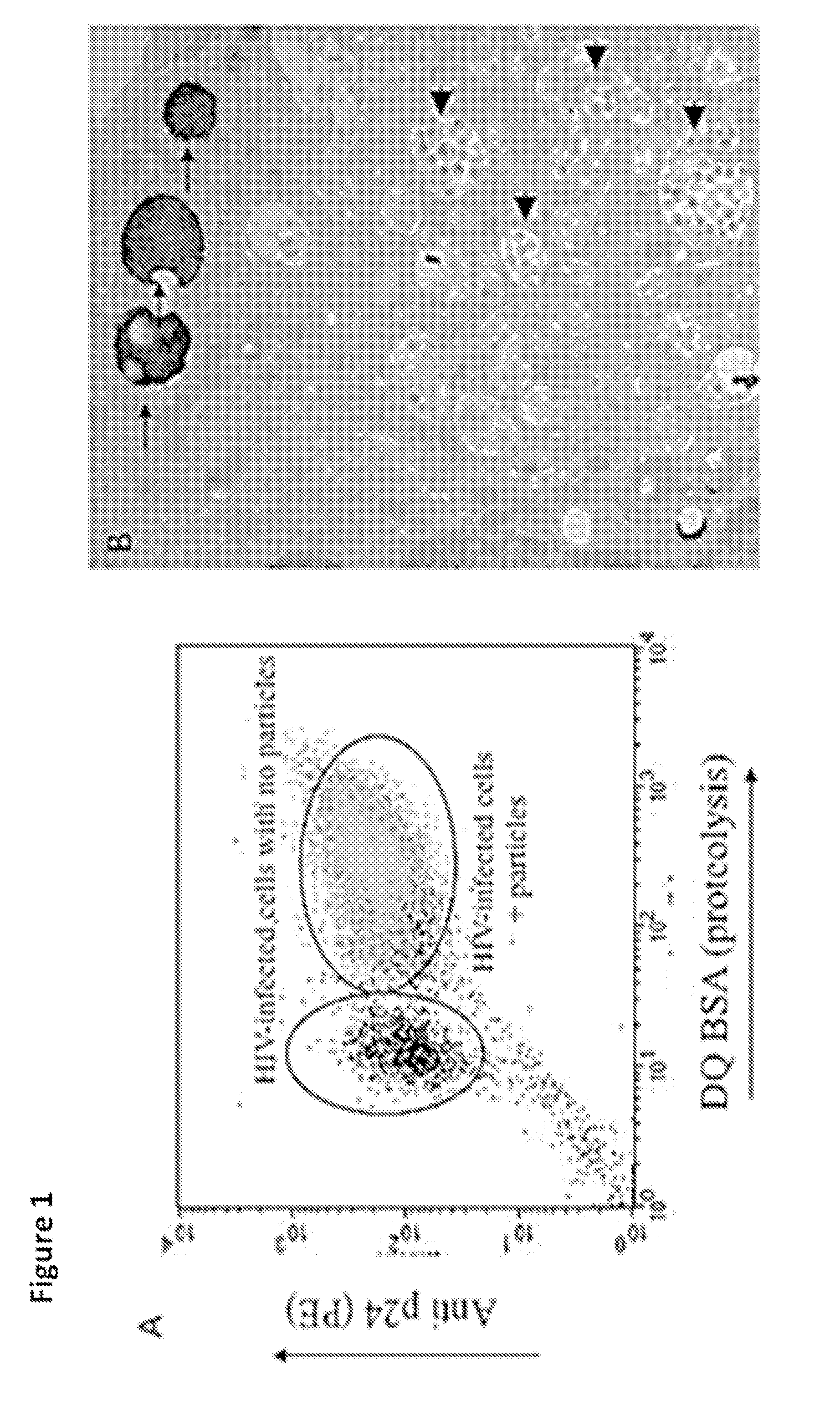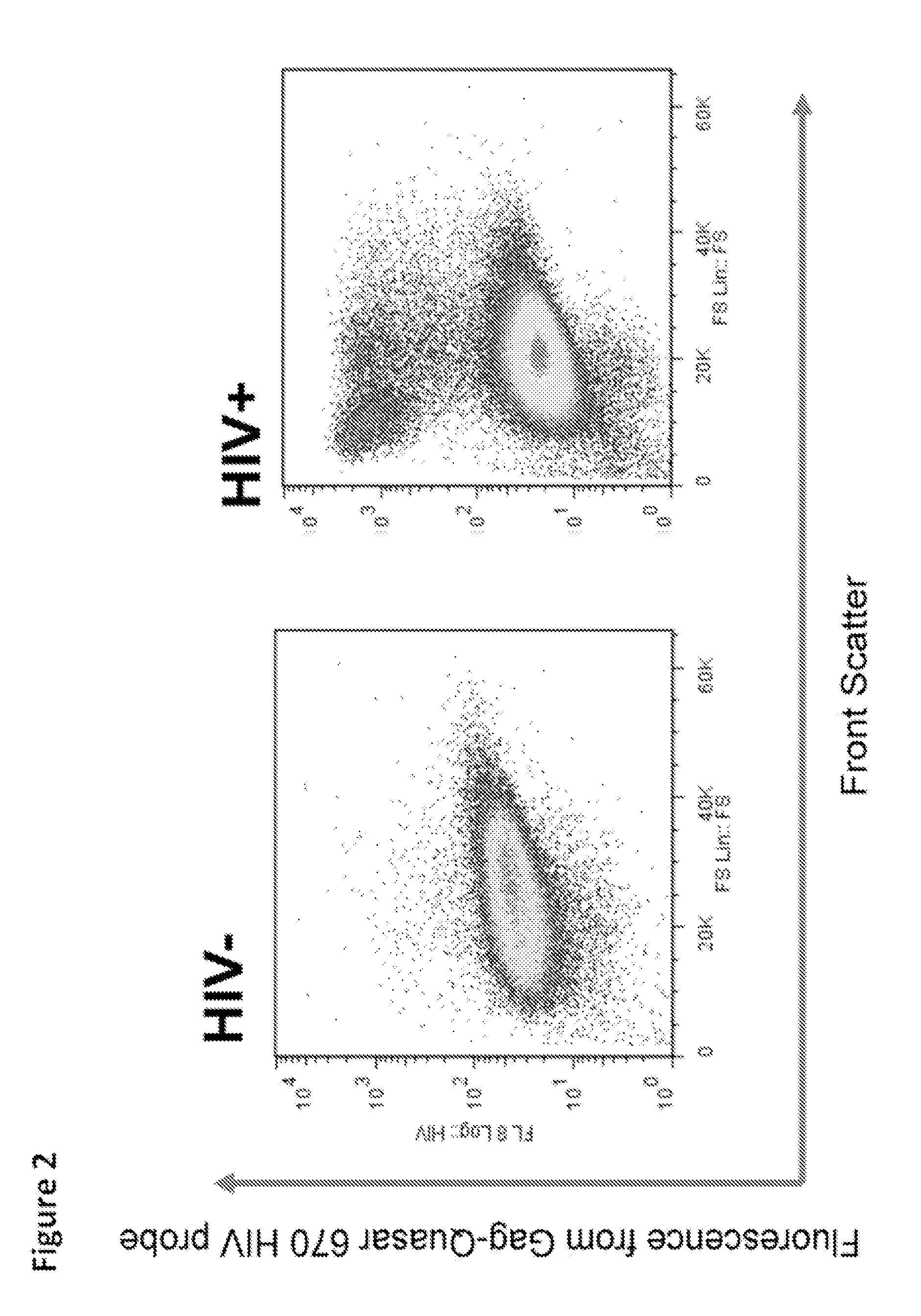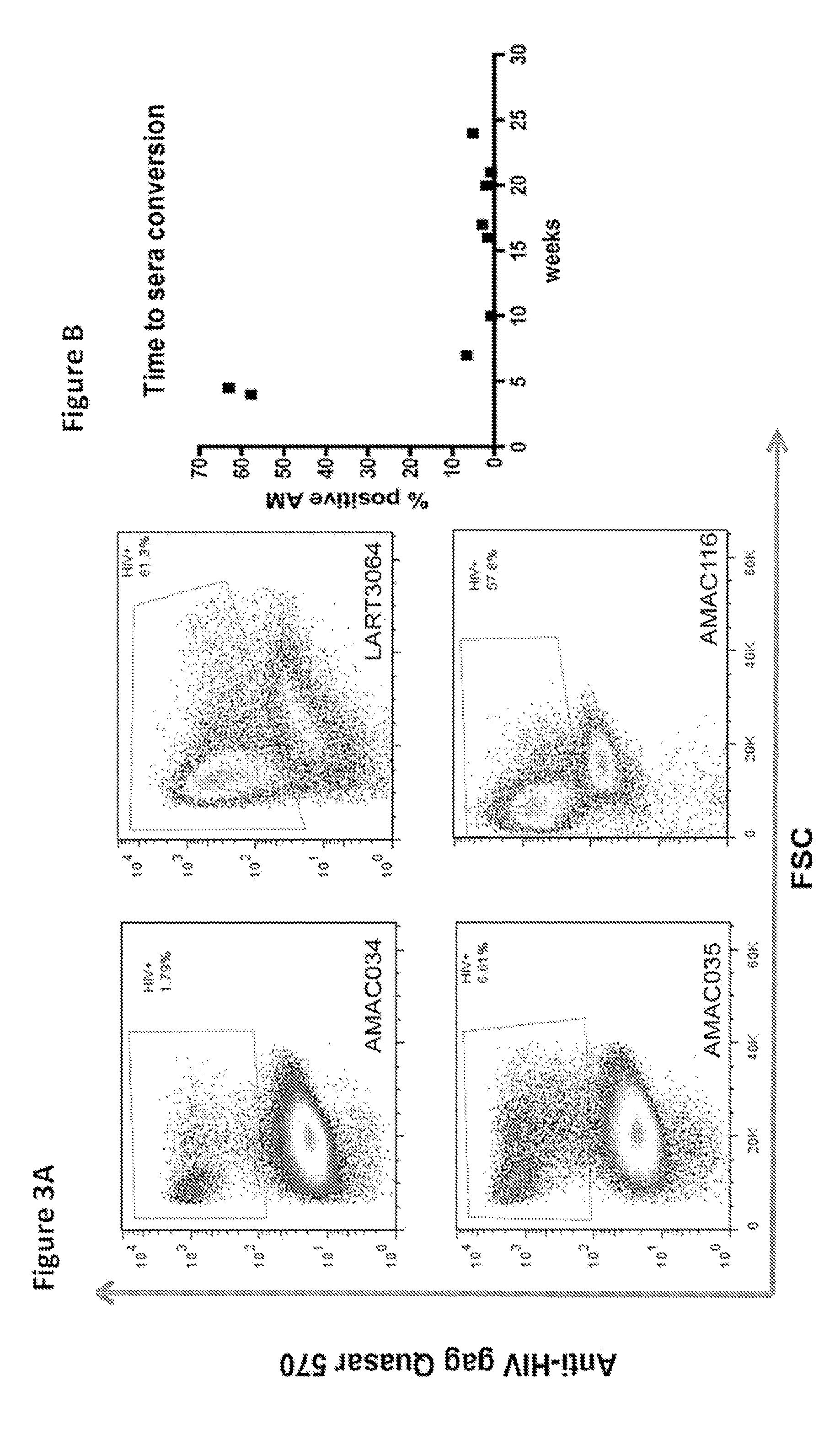Methods for diagnosing human immunodeficiency virus infections
a technology of immunodeficiency virus and human immunodeficiency virus, which is applied in the field of detection and diagnosis of human immunodeficiency virus infection, can solve problems such as putting the uninfected population at risk
- Summary
- Abstract
- Description
- Claims
- Application Information
AI Technical Summary
Benefits of technology
Problems solved by technology
Method used
Image
Examples
example 1
[0043]As shown in FIG. 1, in in vitro infections of human monocyte-derived macrophages with HIV (BaL strain), the infection was easily detected by FISH and flow cyometry staining with anti-p24 antibody. The level of the infection was also visualized by electron microscopy. However, when human alveolar macrophages from HIV positive (HIV+ve) patients were probed with anti-p24 antibodies, the level of viral antigen was below the level of detection by flow cytometry. To enhance the signal a cocktail of antibodies against p24, p17, p120 and Gag was used. But again there was no detectable HIV in cells from HIV+ve patients. These results demonstrated that the viral burden in vivo is considerably lower than that found in vitro.
example 2
[0044]Because of the lack of positive results described in Example 1, we revised our approach to investigate FISH as a technique to improve sensitivity of HIV detection. We engaged in this approach because of published reports that describe using this method successfully to detect HIV in lymphocytes from HIV-infected patients. We first attempted to use a commercially available flow cytometry based in situ HIV-1 mRNA test for intact human cells. The test is offered commercially with the characterization that it can be used in any single cell suspension appropriate for flow cytometry or image analysis, and that it is suitable for use with cell lines, peripheral blood, dissociated tissues, and bodily fluids. It also purports to be able to detect the presence of persistent HIV-1 replication in individuals with undetectable plasma viral load. However, our testing with this commercially available test failed to detect virus in either patients' cells or in 8Ef cells infected with a pseudov...
example 3
[0045]In order to continue attempting to develop a test with previously unavailable sensitivity we utilized two different sets of fluorescently labeled probes having the sequences presented in Table 1 and Table 2, which we had prepared by Biosearch Technologies, Inc., (Novato, Calif.). We successfully probed for the presence of HIV in human alveolar macrophages from HIV+ve patient samples using the labeled probes using flow cytometry.
PUM
| Property | Measurement | Unit |
|---|---|---|
| time | aaaaa | aaaaa |
| time | aaaaa | aaaaa |
| fluorescence in situ | aaaaa | aaaaa |
Abstract
Description
Claims
Application Information
 Login to View More
Login to View More - R&D
- Intellectual Property
- Life Sciences
- Materials
- Tech Scout
- Unparalleled Data Quality
- Higher Quality Content
- 60% Fewer Hallucinations
Browse by: Latest US Patents, China's latest patents, Technical Efficacy Thesaurus, Application Domain, Technology Topic, Popular Technical Reports.
© 2025 PatSnap. All rights reserved.Legal|Privacy policy|Modern Slavery Act Transparency Statement|Sitemap|About US| Contact US: help@patsnap.com



